Within this all-inclusive guide, you will find information on the techniques of quenching and tempering in steel. This blog will dive into the details of these processes explaining how they help to make steel stronger, more flexible and durable at large. Whether you are a professional who has been working with metal for many years or simply someone interested in knowing more about what takes place during these processes, our goal is to give you as much clear and detailed insight as possible. We are going to explore the basic principles, step-by-step procedures and important controlling factors that affect the result of quenching and tempering. Follow us as we reveal the secrets behind making long-lasting high performance steels.
What is Quenching in Heat Treatment?
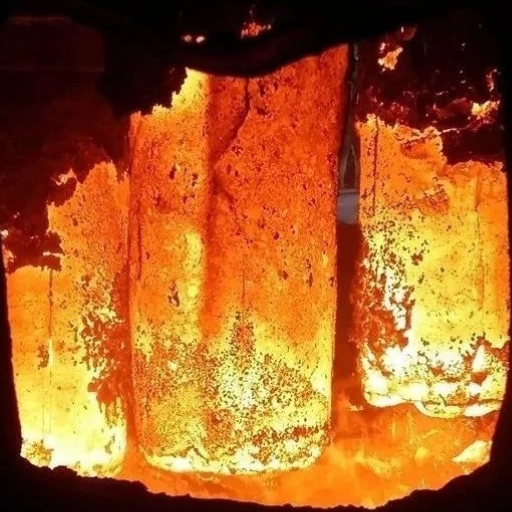
Image source: https://www.linkedin.com/
In heat treatment, quenching is a process where steel is rapidly cooled from a high temperature by being dipped in a quench bath (typically water, oil or air). Quenching’s main aim is hardening steel by transforming its microstructure from austenite to martensite. This rapid cooling procedure also enhances hardness and strength of steel; however, it can easily be made brittle through subsequent tempering operations meant to relieve internal stresses.
Understanding the Quenching Process
The process of quenching involves fast cooling the heated steel to change its microstructure and enhance its mechanical properties. At first, the temperature of the steel is increased to a point where it becomes austenitic; usually between 815°C and 900°C (1500°F and 1650°F) which depends on the alloy of interest. When this critical point is reached by steel, it is quickly put into a selected quenching media such as water, oil or air. The selection of quenching medium relies on desired cooling rate and type of steel being treated. Quick cooling mediums like water are mainly used for high-carbon steels while oil is employed for alloy steels to prevent cracking.
Martensite forms when rapid cooling changes austenite’s microstructure (and also makes it brittle). The transformation causes increase in hardness and strength but also introduces internal stresses that result in brittleness. As a result, tempering usually follows quenching which aims at reducing these stresses so as to improve toughness; tempering is an annealing procedure with lower temperatures than those used during normalizing or hardening. This ensures that not only does steel achieve maximum hardness, but also maintains essential balance between strength and ductility.
Why Quench Steel: Benefits and Applications
To make steel suitable for different industrial uses, it is important to quench it. The greatest advantage of quenching is a substantial rise in its hardness and strength with the latter being of great importance to components that must withstand high amounts of wear such as cutting tools, bearings and gears.
Another benefit of quenching is an improvement in its toughness and load-deforming properties which makes it appropriate for heavy-duty machinery as well as structural applications. These attributes obtained after quenching are invaluable during manufacture of automotive parts, aerospace components and building materials where they should be highly performing as well as long lasting.
In addition to this, the process may affect steel’s grain structure leading to its overall increased toughness if followed by tempering. It is because of this balance between hardness and toughness that quenched steels satisfy strict industry norms while also giving good performance under severe operating conditions.
Quenching Mediums: Which One is Right for Your Steel?
For steel to have the required hardness, toughness and ductility; it is important to select the right quenching medium. Among others, water, oil and air are commonly used as quenching media.
Water Quenching with its high rate of cooling is often preferred for plain carbon steels requiring high hardness. Nevertheless, through thermal stresses, this cooling may be very risky in terms of both distortion and cracking.
Oil quenching is characterized by slower heat transfer than water bath cooling which translates into reduced risks of bending or cracking. It works best when more controlled cooling process is necessary for alloy steels with uniform hardness and durability.
Among the three methods discussed here air quenching has the slowest rate of cooling and hence useful in high-alloy steels and tool steels. It provides a compromise between hardiness and toughness thereby minimizing chances of thermal shock while reducing distortions.
Choosing an appropriate quenching media depends on specific composition of steel materials as well as mechanical properties intended for application purposes.
What is Tempering Steel and How Does It Work?
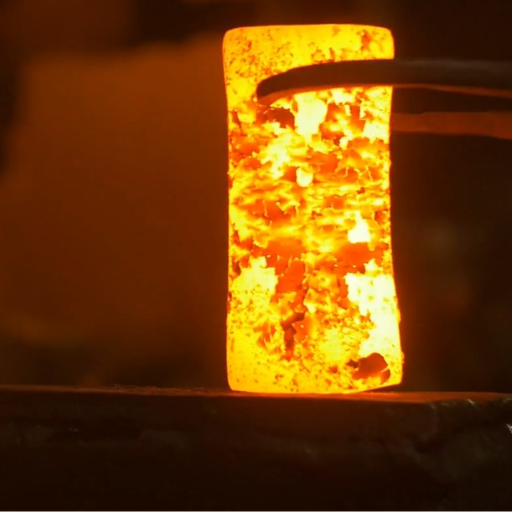
Tempering of steel is a heat treatment procedure carried out after quenching to regulate the mechanical properties of steel, specifically reducing its brittleness and relieving internal stresses that occur due to quenching. This involves reheating the quenched steel to a temperature below its critical point, holding it at that temperature for some time and then cooling it down to room temperature. Reheating causes changes in microstructure thereby enhancing toughness of the steel while maintaining hardness within limits shown by the author. The specific temperature and duration used in tempering depend on the desired trade-off between properties and composition of steel.
Steps Involved in the Tempering Process
- Heating: It is only that the tempered steel has to be heated to a temperature just below its critical point, which is not the same for all different mechanical properties desired and alloying elements present in a particular class of steel.
- Holding: The holding time at this temperature is essential since it would enable or result into attaining an homogeneous state where in turn the microstructure can get properly aligned during this stage.
- Cooling: When cooling is done, the steel is cooled slowly to room temperature. This kind of controlled cooling minimizes internal stresses and improves shock resistance without greatly reducing its hardness.
Thus carefully manipulated these steps can greatly enhance steels’ performance characteristics rendering them useful in a wide range of applications.
Key Tempering Temperatures and Their Effects
The key tempering temperatures and their effects may be summed up as follows:
- Low Temperatures (150-300°C): Low temperature tempering of steel primarily relieves internal stresses without significantly impacting hardness. These are usually high hardness tools with some toughness.
- Medium Temperatures (300-500°C): At medium temperatures, a greater degree of toughness and ductility is achieved in the steel in addition to a slight decline in its hardness. Springs and other components which have to balance between hardness and flexibility are usually tempered within this range.
- High Temperatures (500-650°C): Ductility and toughness increase considerably at high tempering temperatures though these are at the expense of hardness. This temperature range is suitable for structural steels and impact absorbing parts requiring durability as well as resistance to shock.
Knowing how each of these tempering temperatures affects the metallurgical properties of steel will enable engineers to select appropriate procedures that will guarantee satisfactory performance during service life.
Why Tempered Steel is Characterized by Enhanced Properties
The enhanced attributes of tempered steel is owed to a precise heat treatment process in which the steel is heated up to a given temperature and then allowed to cool down at a controlled rate. The procedure serves to refine the microstructure by minimizing internal stresses, eradicating brittleness as well as enhancing toughness and ductility. By adjusting tempering temperatures, metallurgists can modify the balance between hardness and flexibility as per the requirement of a specific application thereby optimizing performance properties of steels. Consequently, such tempered steels exhibit improved mechanical attributes; such as increased strength, impact resistance and wear resistance that make it suitable for use in demanding engineering applications or industries.
How Does Quenching and Tempering Impact Steel Properties?
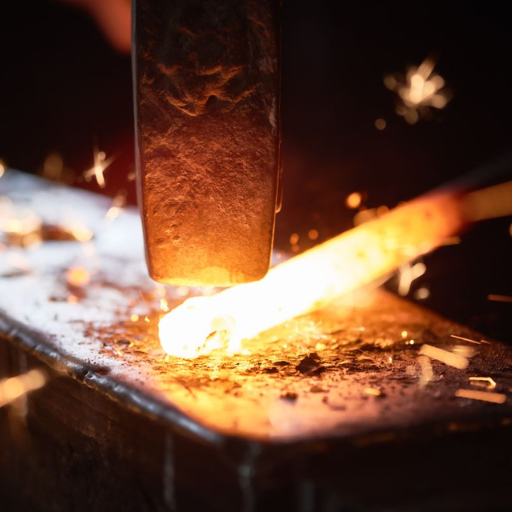
Certainly, the microstructure of steel is significantly affected by quenching and tempering. Quenching cools steel from its austenitizing temperature very rapidly, thereby forming a martensitic structure which is hard but brittle. This makes the steel harder and stronger in tension but weaker as well as less tough. Following quenching, there is tempering which involves reheating to a lower temperature before re-cooling takes place. During this stage internal stresses are relieved, brittleness reduced and toughness and ductility improved without significantly affecting hardness. As such, these two processes aim at ensuring that the steel has got perfect mechanical properties balance hence it will be useful for different applications where strength and durability are both required.
The Formation of Martensite: A Crucial Phase
Quenching is crucial because it changes how steel behaves; martensite formation occurs during this process. Austenite face-centered cubic crystal structure turns into highly stressed body-centered tetragonal lattice known as martensite when cooled quickly from its austenitizing temperature. In fact, this transition happens nearly instantaneously without any diffusion involved creating a phase that is hard though fragile in nature. The distinctive crystal arrangement of martensite not only gives it high hardness coupled with high strength but also causes internal strains resulting in brittleness. Consequently, more tempering must be carried out to modify them so that hardness can be combined with requisite toughness as well as ductility for practical use.
Effects on Hardness and Strength: What’s to Gain?
The hardening and tempering processes are advantageous in terms of hardness and strength. By quenching, steel is turned into martensite, which is known for its high hardness. However, this reduces the metal’s ductility and toughness. This problem is mitigated by tempering whereby the steel is reheated at lower temperatures causing some of the martensite to break down into more stable but ductile structures consisting of ferrite and cementite. This reduces brittleness while keeping much of that enhanced hardness and strength in the material. In summary these processes combine to form a balanced material that is both hard and strong making it useful for many tough applications.
Balancing Hardness and Toughness in Quenched and Tempered Steel
Precise control over the tempering process is critical if optimum balance between hardness and toughness of quenched and tempered steels is to be achieved. The final properties of the steel are influenced directly by tempering temperature as well as duration. Lower temperatures at which tempering is done tend generally to retain higher levels of hardness with less improvement in toughness being made available. Conversely, higher temperatures reduce hardness moderately while increasing toughness significantly too. On top of this some methods such as double tempering where two consecutive cycles are employed can refine microstructure even further resulting in improved performance. For applications requiring great resistance towards fatigue and impact also needing high strength, this combination between hardness versus toughness must exist there always.
What Common Alloys Are Suitable for Quenching and Tempering?
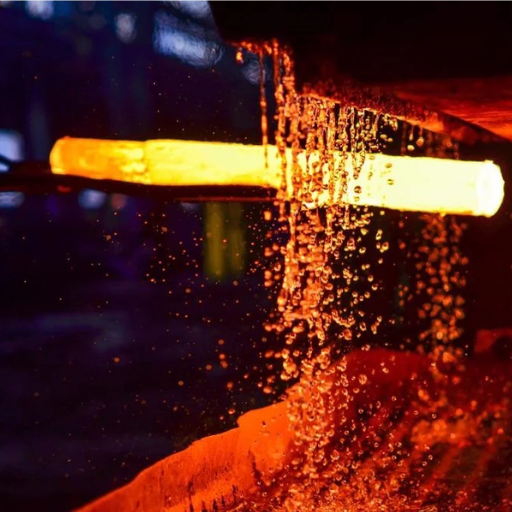
The common alloys suitable for quenching and tempering are high-carbon steels, alloy steels, and some tool steels. High-carbon steels like AISI 1045 and AISI 1095 can have a high hardness and strength after treatment. For this reason, alloy steels such as AISI 4140 and AISI 4340 are often used since they have greater hardenability while still maintaining ductility and toughness after tempering. Tool steels such as D2 and O1 are also preferred because of their excellent wear resistance during heat treatment. All these alloys can be treated to attain the right balance of hardness and toughness that is tailored for specific applications through controlled quenching followed by tempering.
Top Alloys and Their Properties
1. AISI 1045
AISI 1045 is a medium tensile strength, high hardness and good machinability combination of high carbon steel. Its mechanical properties can be improved further by heat treatment because it exhibits excellent wear resistance. It has an intermediate level of hardness and toughness in the as-quenched and tempered state making it applicable in various industrial applications like gears, shafts, axles etc.
2. AISI 4140
AISI 4140 is a low alloy steel with chromium and molybdenum additions that give rise to its superior hardenability and strength. Even after thermal treatment, this alloy maintains good fatigue endurance as well as impact resistance. It finds application in areas requiring high mechanical performance such as aerospace components, automotive parts or heavy machinery.
3. AISI 4340
AISI 4340 is a type of alloy steel that exhibits high ductility, toughness and wear resistance. The presence of nickel also enhances the fatigue strength and toughness of this alloy. The quenched-and-tempered condition results in outstanding mechanical properties rendering it suitable for critical applications like aircraft landing gear, engine parts subjected to severe stress, structural members etc.
These alloys are notable for their ability to reach an optimum balance between hardness and toughness when properly heat-treated through the processes of quenching and tempering respectively; thus enhancing their usefulness in numerous industrial applications where dependable strength & durability are necessary features sought after by clients most often
Comparing Alloy Performance Post Heat Treatment
In evaluating the performance of AISI 1045, AISI 4140 and AISI 4340 after heat treatment, it is crucial to consider the unique composition and properties of each alloy.
- AISI 1045 is a versatile medium-carbon steel that offers a well balanced combination of hardness and toughness after quenching and tempering. It has mechanical properties are sufficient for moderate to high-stress applications making it a dependable choice for components like gears and shafts.
- AISI 4140 possesses superior hardenability and strength due to its chromium and molybdenum additions. It retains its excellent fatigue and impact resistance even after post heat treatment hence suitable for more demanding uses such as aerospace industry or automotive sector.
- AISI 4340 has better wear resistance because of the presence of nickel which makes it have better toughness compared to other alloys. It is therefore always subjected to quenching as well as tempering as it gives excellent mechanical properties that make this alloy perfect for aircraft landing gear, heavy duty engine parts.
To sum up, AISI 1045 exhibits reasonable tradeoffs between toughness and hardness rendering it most suitable for many industrial applications while AISI 4140 as well as AISI 4340 demonstrate superior performance in highly demanding sectors due to their richer compositions with respect to those alloys enhanced combined with improved metals’ qualities after being performed thermal treatments on.
How to Optimize the Quenching and Tempering Heat Treatment Process?
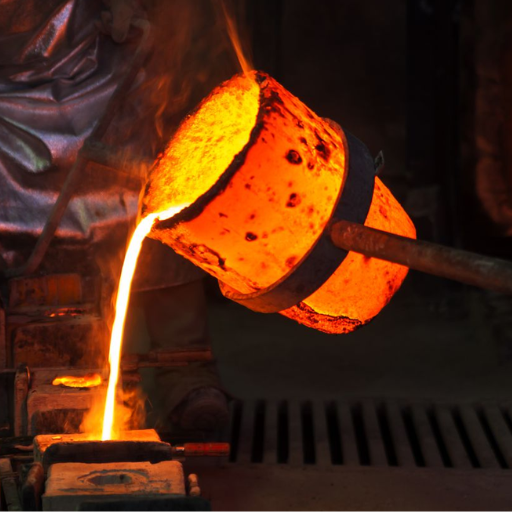
To make quenching and tempering of heat treatment efficient, certain vital aspects need be considered.
- Material Selection: The appropriate alloy should be chosen determined by the desired mechanical properties. Make sure that the alloy is homogeneous in terms of its composition and application.
- Temperature Control: Overheating must be avoided during quenching through precise control of the quench temperature, which can cause distortion or cracking. The tempering process should also be controlled carefully for proper balance between toughness and hardness.
- Quenching Medium: To achieve cooling rates required for an alloy, chose a suitable quenchant such as water, oil or air. For uniform cooling, keep consistency and purity of media.
- Heating Rate: Raise the temperature gradually when heating to minimize thermal stress and avoid bending.
- Time Management: To attain certain microstructure and mechanical properties in alloys quenched and tempered properly duration should be controlled.
- Post-Treatment Inspection: After processing require strict checks on quality, such as post-heat treatment inspections (including hardness testing, metallographic analysis of structure, impact resistance tests) that will check if intended dimensions and mechanical characteristics are met.
By closely monitoring these factors one can optimize the quenching and tempering heat treatment process leading to superior performance and reliability components.
Steps to Ensure Precise Steel Is Heated and Cooled
- Pre-Heat Treatment Preparation: The steel should be cleaned completely to remove impurities such as oils, grease or surface oxides that would affect the heating process. Conduct any necessary preheating treatments to ensure the steel is ready for heat treatment.
- Controlled Heating: Use equipment that can precisely control temperature to gradually heat the steel up to the required level. This will help avoid thermal shocks and reduce risks of warping or cracking.
- Uniform Heating: Make sure that there is uniform distribution of temperature in the furnace through properly calibrated thermocouples and maintaining a consistent heating rate. By doing so, even heating is promoted thus preventing hot/cold spots.
- Consistent Quenching: Choose an appropriate quenching medium while controlling its temperature. Stirring it promotes even cooling and prevents irregular microstructures from developing.
- Post-Quench Stabilization: Let the quenched steel stand at room temperature until all residual stresses are relieved before going further in terms of other stages of heat treatment.
- Controlled Tempering: After which reheat the quenched steel at a tempering temperature that can be holded evenly throughout the furnace.This helps to achieve desired levels of hardness and toughness by adjusting them accordingly.
- Quality Control: Ensure detailed inspection including examination on hardness as well as microstructural tests done on the steel have achieved properties required of it; therewith adjustments may be made regarding results obtained during inspection in question.
In this way, the process of heat treatment for steels can be controlled more exactly resulting in high quality and dependable components made out of steel.
Avoiding and Troubleshooting Common Issues
To this end, there are several key things to consider as regards ways of avoiding and troubleshooting common problems in the steel heat treatment process:
- Cracking and Warping: To avoid any cracking or warping, ensure gradual heating and cooling by preserving controlled heating rates; use gentle temperature stage transitions to avoid thermal shock. Uniform quenching practices as well as correct selection of appropriate quenching media are vital.
- Decarburization: Avoid decarburization by maintaining an optimum furnace atmosphere. Protective atmospheres or coatings can be used to eliminate carbon loss from the steel surface which will help maintain integrity and strength.
- Uneven Hardness: Make sure that even hardness is across each product by using uniform heating and cooling stages. Proper placement of thermocouples as well as stirring consistency of quenching media helps prevent hotspots and temperature variations.
Through a careful control and surveillance of them, the above challenges can be tackled during the heat treating procedure so that good quality steels with desirable mechanical properties can be produced.
Frequently Asked Questions (FAQs)
Q: What is the process of quenching and tempering in steel production?
A: Quenching and tempering are processes that strengthen steel and other iron-based alloys. This involves rapidly cooling the material, known as quenching, and then reheating it to specific tempering temperatures to obtain the desired material properties.
Q: Why is steel austenitized before quenching?
A: Steel is austenitized before quenching to transform its internal structure. During this process, the steel is heated to a temperature where the crystal lattice changes to austenitic, which is essential for achieving maximum hardness and durability upon quenching.
Q: What is the purpose of the process of quenching?
A: The purpose of the process of quenching, also known as quench hardening, is to rapidly cool the steel to transform its structure into hardened steel with increased strength. This rapid cooling transforms the austenitic structure into martensite, which is much harder.
Q: How do the selected tempering temperatures affect the steel?
A: The tempering temperatures are selected based on the desired balance between hardness and toughness. Higher tempering temperatures generally reduce hardness but increase toughness, while lower temperatures maintain greater hardness but can lead to brittleness.
Q: How does tempering improve the material properties of steel?
A: Tempering improves the material properties of steel by relieving internal stresses and reducing brittleness introduced during quenching. This process refines the microstructure, making the steel more adaptable for various applications while maintaining adequate strength.
Q: What microstructural changes occur in steel during tempering?
A: During tempering, the microstructure of steel transitions from a hard, brittle martensite phase to a more balanced and stable phase like pearlite or bainite, depending on the tempering temperature and duration. This refines the material properties, providing a good mix of hardness and ductility.
Q: Are specific steels better suited for quenching and tempering?
A: Yes, specific steels, particularly those with higher carbon content and alloying elements, are better suited for quenching and tempering. These steels respond well to the thermal cycles, providing excellent hardness, strength, and toughness after the processes.
Q: Can quenching and tempering be applied to metals other than steel?
A: While quenching and tempering are most commonly associated with steel and other iron-based alloys, similar processes can be applied to various metals to improve their mechanical properties. However, the specifics of the process may vary depending on the metal.
Q: How does the quenching and tempering process affect the lattice structure of steel?
A: The quenching process initially transforms the lattice structure from austenitic to martensitic, which is much harder. Then, during tempering, the lattice undergoes further refinement, relieving internal stresses and stabilizing the structure to improve ductility and toughness.





